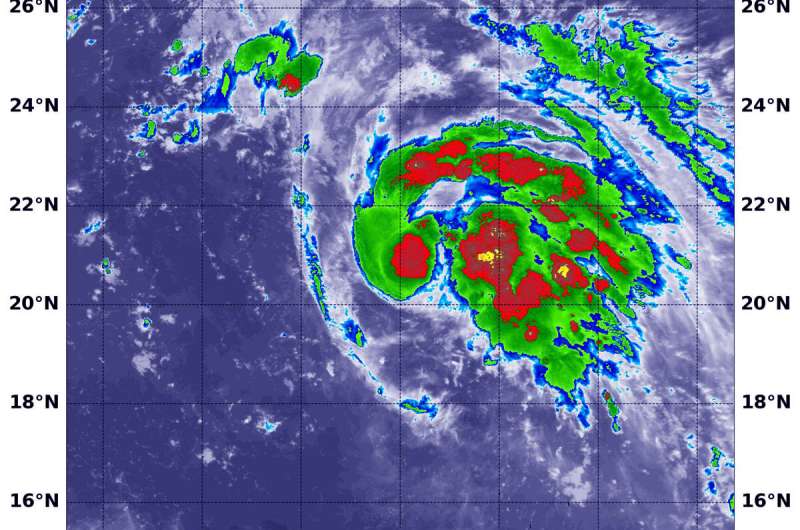Tropical storm Faxai gets a name and NASA gets an infrared picture

Tropical Storm 14W has been moving through the Northwestern Pacific Ocean for several days and has now been renamed Faxai. NASA's Aqua satellite passed over the newly renamed storm and took the temperature of Faxai's clouds and storms.
NASA's Terra satellite used infrared light to analyze the strength of storms in the remnants of Tropical Storm Faxai. Infrared data provides temperature information, and the strongest thunderstorms that reach high into the atmosphere have the coldest cloud top temperatures.
On Sept. 5 at 8:15 a.m. EDT (1215 UTC), the Moderate Imaging Spectroradiometer or MODIS instrument that flies aboard NASA's Terra satellite found strongest thunderstorms had cloud top temperatures as cold as or colder than minus 70 degrees Fahrenheit (minus 56.6 Celsius). Those temperatures were in cloud tops of storms around the low-level center of circulation and in a thick band of thunderstorms that wrapped around the storm from west to north to east. Cloud top temperatures that cold indicate strong storms with the potential to generate heavy rainfall.
The imagery also showed the southwestern side was cloud free, and that is because of sinking air, or subsidence, which prevents the development of thunderstorms. It is being caused by an elongated area of low pressure located to the south of the storm and a Tutt Cell to the north. A Tutt Cell is a Tropical Upper Tropospheric Trough (elongated area of low pressure).
On Sept. 5 at 11 a.m. EDT (1500 UTC), Tropical Storm Faxai, formerly known as 14W, was located near 20.8 degrees north latitude and 154.0 degrees east longitude. That is about 742 nautical miles east-southeast of Iwo To island, Japan. Faxai was moving to the north-northwest and had maximum sustained winds 40 knots (46 mph/74 kph).
The Joint Typhoon Warning Center (JTWC) expects Faxai will move west-northwest across the Northwestern Pacific Ocean and turn north after three days. It is expected to make landfall near Tokyo at 80 knots on Sunday, Sept. 8.
Provided by NASA's Goddard Space Flight Center




















